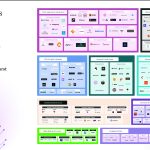
Loyalty points systems incentivize repeat purchases by rewarding customers with points they can redeem for various perks. This article dives into the mechanics of loyalty points systems, their benefits, and how businesses can effectively implement them to enhance customer engagement and drive sales.
Understanding Loyalty Points Systems
How They Work
Loyalty points systems operate on a simple premise: customers earn points for every purchase or engagement activity, which can later be redeemed for rewards. This could range from discounts and free products to exclusive experiences and access to special events. The accumulation of points encourages repeat business, fostering a deeper connection between the customer and the brand.
Key Features
- Points Accumulation: Customers earn points through purchases and other defined actions such as social media engagement or referrals.
- Redemption Options: A diverse reward catalog allows customers to redeem points for a variety of rewards.
- Tiered Rewards: Higher levels of engagement unlock additional benefits, incentivizing customers to increase their spend.
- Personalized Offers: Tailored promotions based on customer behavior and preferences keep the program relevant and engaging.
- Real-Time Tracking: Customers can track their points and rewards in real time, adding transparency and motivation.
Benefits of Loyalty Points Systems
Increased Customer Retention
Loyalty points programs are effective at keeping customers engaged. By rewarding repeat purchases, businesses can significantly reduce churn rates. Customers feel valued and appreciated, which translates into long-term loyalty.
Enhanced Customer Lifetime Value (CLV)
The more customers spend, the more points they earn, and the more they are likely to spend in the future to reach their next reward. This cyclical effect increases the overall customer lifetime value, benefiting the business financially.
Data-Driven Insights
Loyalty points systems generate a wealth of data. This data provides insights into customer behavior, preferences, and purchasing patterns, allowing businesses to tailor their marketing strategies more effectively. Understanding what drives customer engagement can lead to more targeted and successful campaigns.
Competitive Advantage
A well-implemented loyalty program can set a business apart from its competitors. Customers are more likely to choose a brand that rewards them for their loyalty. This competitive edge can attract new customers while retaining existing ones.
Boosted Sales and Revenue
Special promotions like double points events or bonus points for specific products can drive sales spikes. These targeted incentives encourage customers to make additional purchases, boosting overall revenue.
Implementing a Successful Loyalty Points System
- Define Clear Objectives
Establish what you aim to achieve with your loyalty program. Whether it’s increasing retention, boosting sales, or enhancing customer engagement, clear goals will guide your strategy and measure success.
- Segment Your Audience
Not all customers are alike. Segment your audience based on demographics, purchasing behavior, and engagement levels. Tailor your loyalty program to meet the unique needs of each segment for maximum effectiveness.
- Offer Diverse Rewards
A varied reward catalog ensures there’s something for everyone. From discounts and freebies to exclusive experiences, offering diverse rewards keeps the program appealing and engaging for all customer types.
- Promote Your Program
Ensure customers know about your loyalty program. Promote it through your website, email campaigns, social media, and in-store signage. Clear communication of the benefits and how to join is crucial for widespread adoption.
- Leverage Technology
Use a robust loyalty software platform to manage your program. The right software can automate point tracking, redemption processes, and customer communications, ensuring a seamless experience.
- Monitor and Adjust
Continuously monitor your program’s performance using data analytics. Track key metrics such as participation rates, points accumulation, and redemption patterns. Use this data to make informed adjustments and keep the program fresh and effective.
Loyalty points systems are a powerful tool in the arsenal of customer retention strategies. They not only incentivize repeat purchases but also provide valuable data and insights that can drive business growth. By implementing a well-designed loyalty points program, businesses can enhance customer engagement, boost retention, and ultimately, increase sales and profitability.












